Ripple, noise, flicker and dimming depth with LED Drivers
Flicker is a directly visible change in brightness of a light source which can be due to fluctuations of the light source itself, or due to external causes such as due to rapid fluctuations in the voltage of the power supply (power-line flicker) or incompatibility with an external dimmer. The key point to causing flicker is the fluctuations of the output current sourcing from LED drivers. Compared to traditional fluorescent light sources, LEDs instantaneously translate their operating current into light, without much smoothing effects. That means a lower ripple, a higher quality of light. In general, heavy flickering at low frequencies should be avoided. The figure below is a measurement according to Kelly-Metric (0…80 Hz) 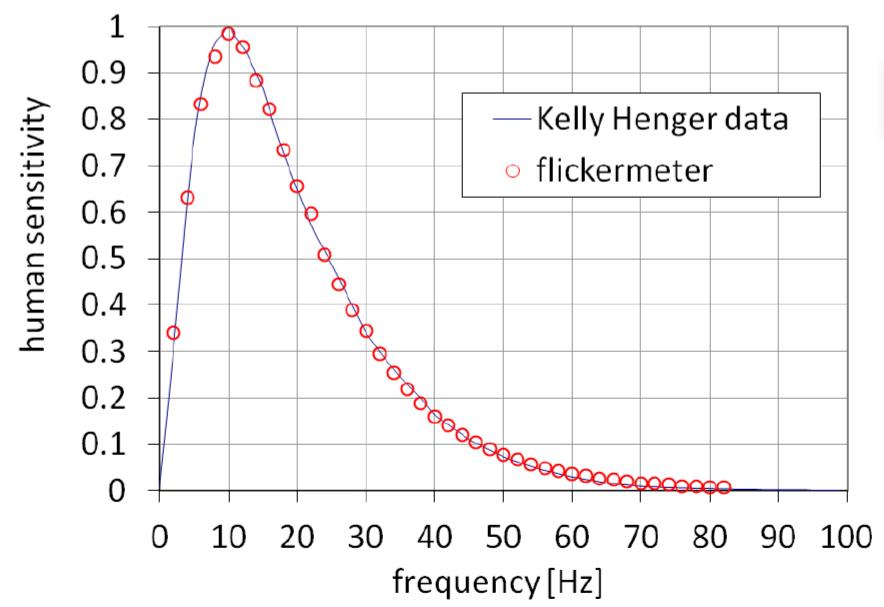 Fig.1 Human sensitivity vs. Frequency From the figure1, by increasing the frequency of light, the risk of human sensitivity decreases dramatically. Especially, frequency above 70 Hz. Flicker is caused by Ripple Current. An AC waveform can be identified on the DC output of a LED drivers, which is shown in there(Figure 2) are two AC components, also known as Ripple and Noise on the DC output. The first one, coming from sine wave rectification, is at a low frequency which is 2 times the input frequency (Figure 3); the second one is at high frequency which is from the switching frequency.
Fig.1 Human sensitivity vs. Frequency From the figure1, by increasing the frequency of light, the risk of human sensitivity decreases dramatically. Especially, frequency above 70 Hz. Flicker is caused by Ripple Current. An AC waveform can be identified on the DC output of a LED drivers, which is shown in there(Figure 2) are two AC components, also known as Ripple and Noise on the DC output. The first one, coming from sine wave rectification, is at a low frequency which is 2 times the input frequency (Figure 3); the second one is at high frequency which is from the switching frequency. 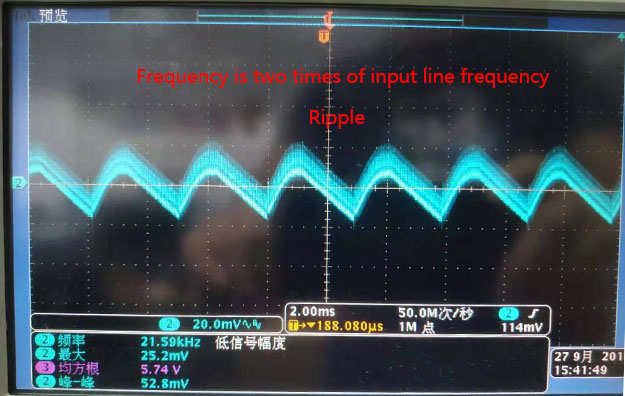
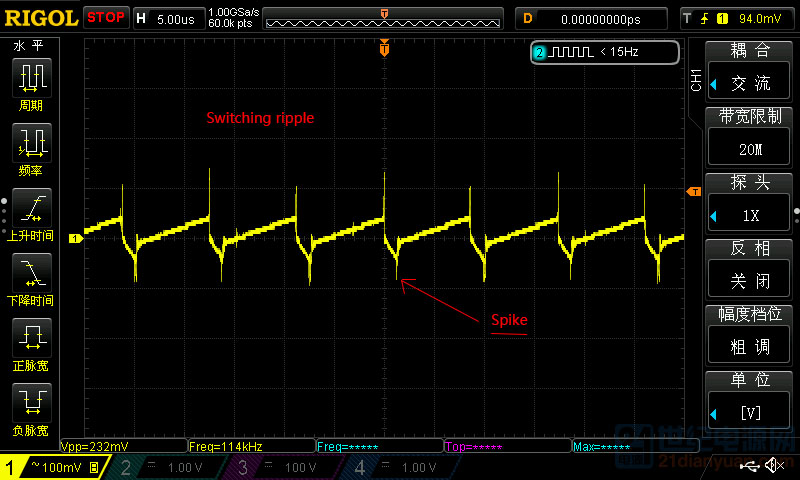 Fig 2. Ripple and Noise
Fig 2. Ripple and Noise 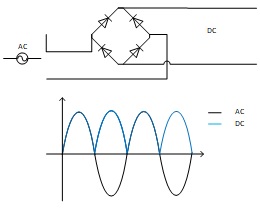 Fig 3. Output ripple is double of the input frequency There are three primary lighting objectives when considering flicker-less drivers, that it be smooth, deep, and has a low risk of visible distractions or physiological effects of flicker through the dimming range, which means NO RIPPLE and NOISE through dimming range. Because any fluctuation in the current wave will cause the flicker, especially in low output dimming level.
Fig 3. Output ripple is double of the input frequency There are three primary lighting objectives when considering flicker-less drivers, that it be smooth, deep, and has a low risk of visible distractions or physiological effects of flicker through the dimming range, which means NO RIPPLE and NOISE through dimming range. Because any fluctuation in the current wave will cause the flicker, especially in low output dimming level. 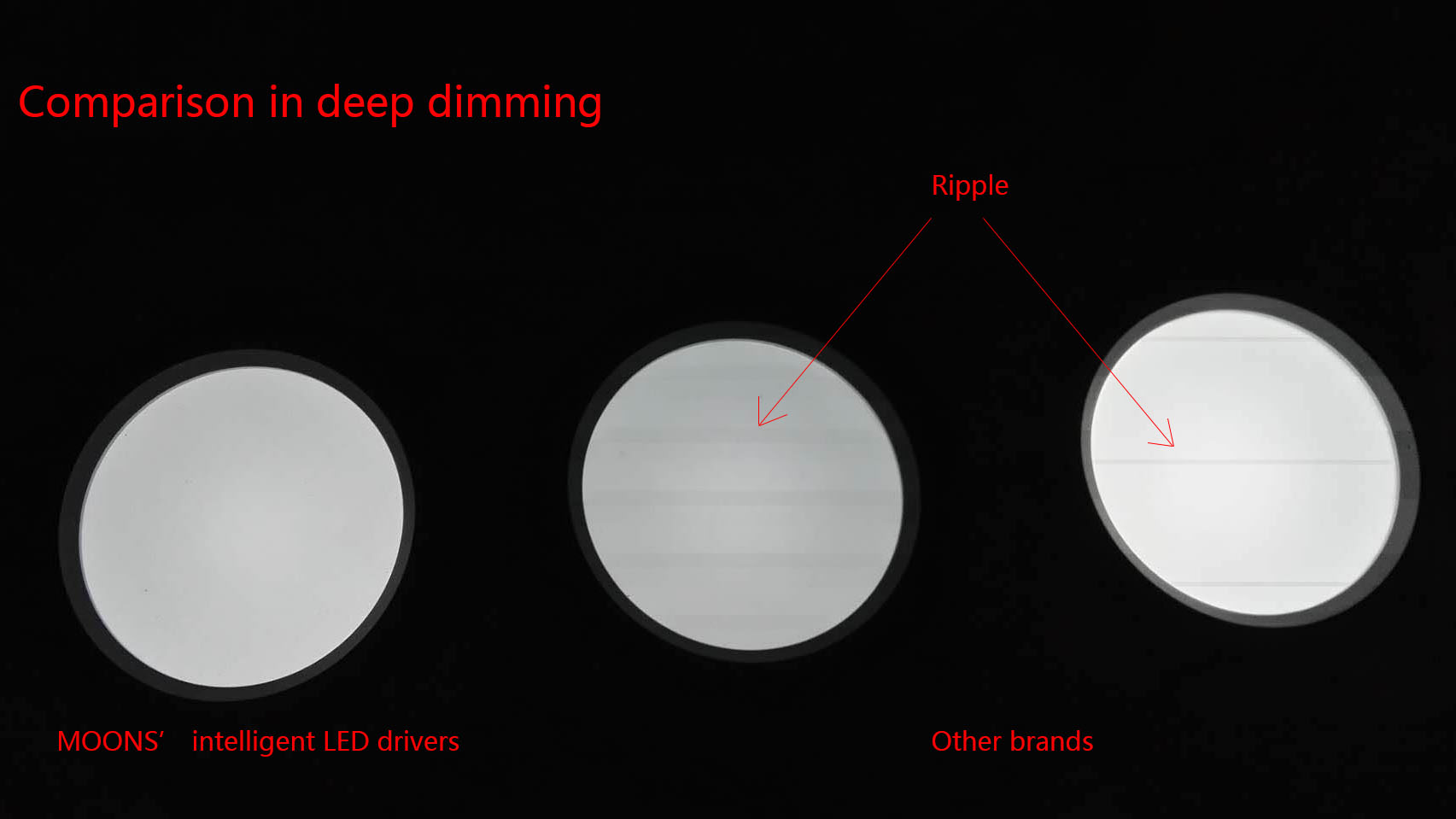 Fig 4. Deep dimming performance
Fig 4. Deep dimming performance  Fig 5. The smoothness of the light output
Fig 5. The smoothness of the light output 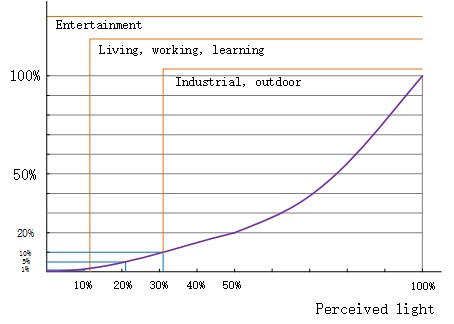 Fig 6. Measured power vs. perceived light
Fig 6. Measured power vs. perceived light  Fig7. PhotoStudio For more information about 0.1% intelligent LED drivers please refer to MOONS' website.
Fig7. PhotoStudio For more information about 0.1% intelligent LED drivers please refer to MOONS' website. 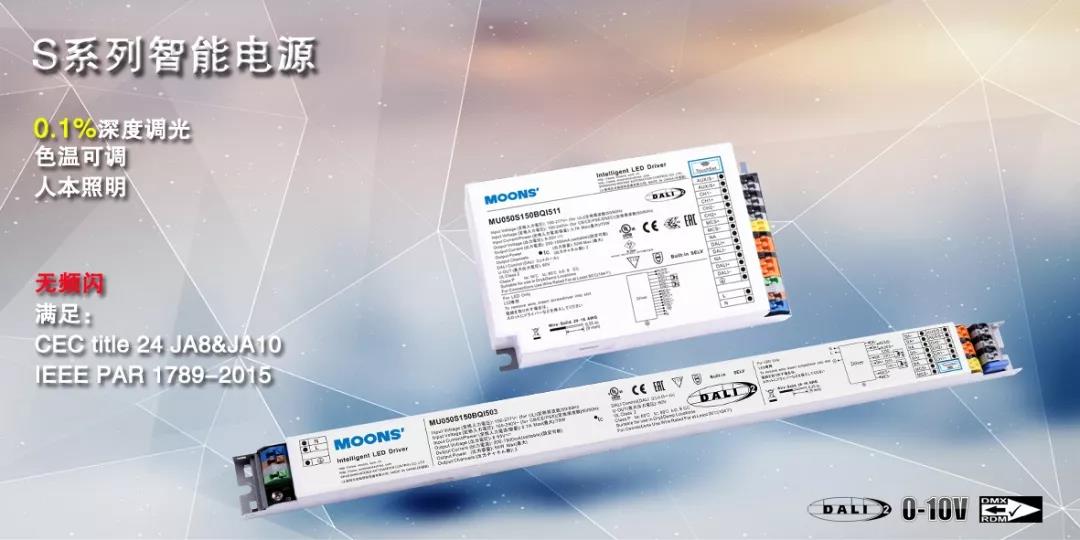
 Fig.1 Human sensitivity vs. Frequency From the figure1, by increasing the frequency of light, the risk of human sensitivity decreases dramatically. Especially, frequency above 70 Hz. Flicker is caused by Ripple Current. An AC waveform can be identified on the DC output of a LED drivers, which is shown in there(Figure 2) are two AC components, also known as Ripple and Noise on the DC output. The first one, coming from sine wave rectification, is at a low frequency which is 2 times the input frequency (Figure 3); the second one is at high frequency which is from the switching frequency.
Fig.1 Human sensitivity vs. Frequency From the figure1, by increasing the frequency of light, the risk of human sensitivity decreases dramatically. Especially, frequency above 70 Hz. Flicker is caused by Ripple Current. An AC waveform can be identified on the DC output of a LED drivers, which is shown in there(Figure 2) are two AC components, also known as Ripple and Noise on the DC output. The first one, coming from sine wave rectification, is at a low frequency which is 2 times the input frequency (Figure 3); the second one is at high frequency which is from the switching frequency. 
 Fig 2. Ripple and Noise
Fig 2. Ripple and Noise  Fig 3. Output ripple is double of the input frequency There are three primary lighting objectives when considering flicker-less drivers, that it be smooth, deep, and has a low risk of visible distractions or physiological effects of flicker through the dimming range, which means NO RIPPLE and NOISE through dimming range. Because any fluctuation in the current wave will cause the flicker, especially in low output dimming level.
Fig 3. Output ripple is double of the input frequency There are three primary lighting objectives when considering flicker-less drivers, that it be smooth, deep, and has a low risk of visible distractions or physiological effects of flicker through the dimming range, which means NO RIPPLE and NOISE through dimming range. Because any fluctuation in the current wave will cause the flicker, especially in low output dimming level.  Fig 4. Deep dimming performance
Fig 4. Deep dimming performance 1. The smoothness of Light Output
To achieving the smoothness of light output, we should understand it depend on the distinction from one dimming level to other dimming levels. You can see figure 5 as shown below. To ensure natural dimming performance the driver should step the LED from 100% light output to its low-end light level without perceived change. Fig 5. The smoothness of the light output
Fig 5. The smoothness of the light output 2. Light Level
Figure 6 shows the relationship of measured power (similar to measured light) versus perceived light. This is an important distinction to make with LEDs since achieving low stable light levels is often a challenge. With traditional incandescent and halogen sources, this was not an issue because they were able to dim smoothly to very low perceived light levels. Fig 6. Measured power vs. perceived light
Fig 6. Measured power vs. perceived light 3. Flicker
There are two types of flicker, visible and invisible flicker. Visible flicker, like the old strobe light that has an effect on human brains and eyes. But if someone stays in it for too long, he will become disorientated and nauseous and long term exposure was not recommended. Invisible flicker is frequency above 100Hz. This flicker is more dangerous because it is subliminal and the effects to the brain are rarely noticed and cause a host of short term and long term diseases including dizziness, headaches, impaired thought. The LEDs on the market right now have invisible flicker and flicker between 100-400 Hz. However, frequencies up to 400 Hz negative effects on human beings cannot be fully ruled out. As a common consumer, we should have a concern about those three aspects before choosing a dimmable LED driver. If you want to achieve natural dimming performance, the MOONS' 0.1% deep dimming LED drivers are the best choice for you. Fig7. PhotoStudio For more information about 0.1% intelligent LED drivers please refer to MOONS' website.
Fig7. PhotoStudio For more information about 0.1% intelligent LED drivers please refer to MOONS' website. 
